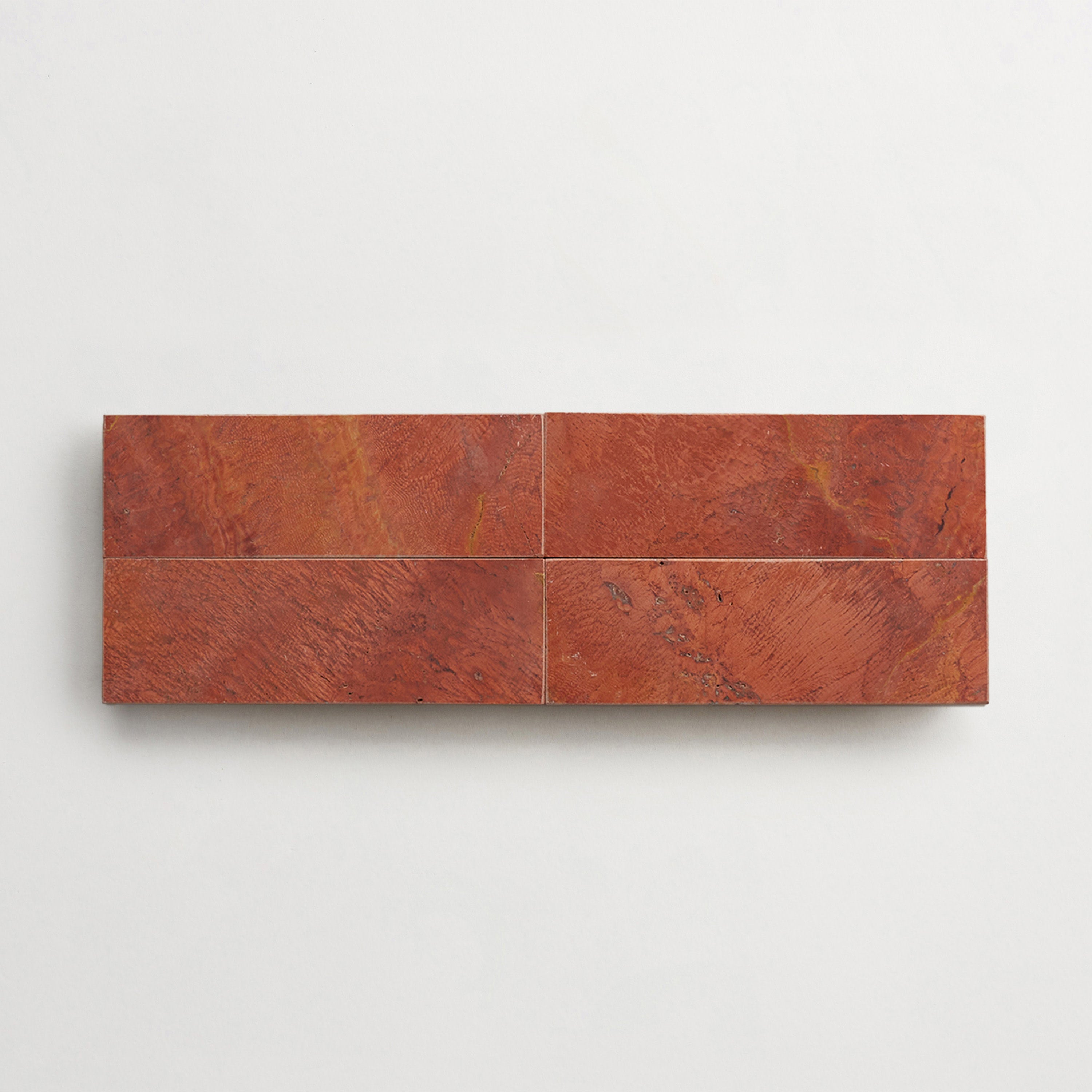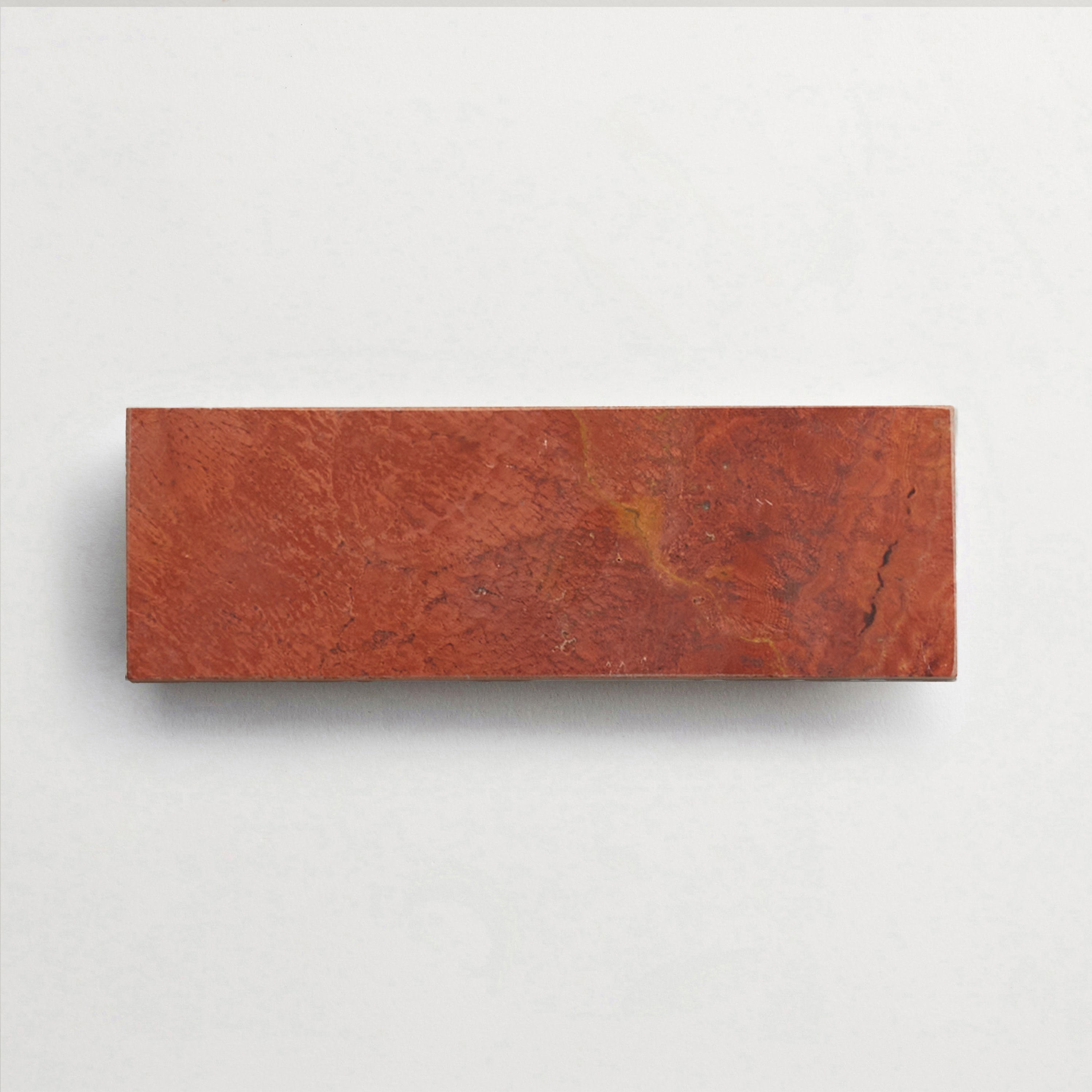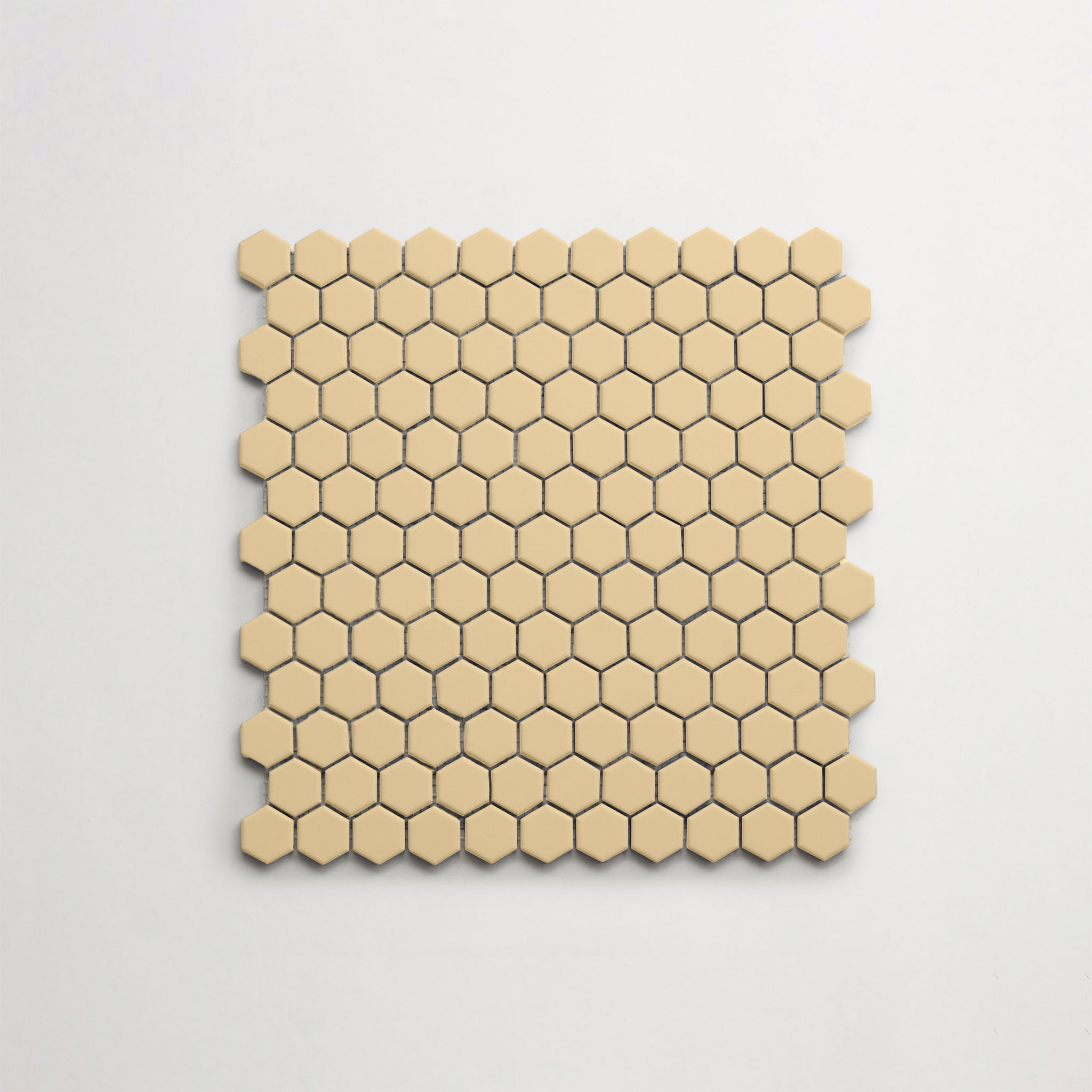your shopping cart is empty.

Travertine vs. Ceramic Tile For Outdoors: How to Choose
Choosing between travertine and ceramic tile for your outdoor space can feel like an impossible decision—both are classic, beautiful materials that bring style and functionality to patios, walkways, and pool surrounds. Each offers its own appeal: travertine’s natural, timeless texture versus ceramic’s versatility and ease of maintenance.
This guide breaks down everything you need to know before deciding, including overviews of each material, their pros and cons, and how they compare in durability, care, slip resistance, and ease of cutting—so you can choose the right fit for your outdoor design.
Explore our boutique, handcrafted tile collections while you read.
Ceramic Tile: What Is It and Where Does It Come From?
Ceramic tile is a durable material made from natural clay that’s shaped, glazed, and kiln-fired at high temperatures. Its origins date back thousands of years, with ancient civilizations like the Egyptians and Romans using it for decorative and functional surfaces. Today, ceramic tile remains a staple in design thanks to its versatility, wide range of colors and finishes, and suitability for both indoor and outdoor spaces.
Pros and Cons of Using Ceramic Tile Outdoors
Ceramic tile offers excellent versatility for outdoor projects, available in countless colors, patterns, and finishes to suit nearly any style. It’s typically more affordable than natural stone, making it a cost-effective option for patios, walkways, and pool areas.
Ceramic is also relatively easy to install and maintain—requiring only routine cleaning—and provides good durability in mild climates when properly installed and sealed.
However, not all ceramic tiles are suitable for outdoor environments. Some varieties may crack or chip in freeze-thaw conditions, making them less ideal for colder regions. (Always check materials guidelines before making a decision.)
Additionally, smooth or glossy ceramic tiles can become slippery when wet, so it’s important to choose textured or matte finishes for safer footing in outdoor flooring spaces.
Travertine Tile: Its Composition and Origins
Travertine tile is a type of natural stone surface formed from mineral deposits, primarily calcium carbonate, in hot springs and limestone caves. Prized since ancient Roman times for its strength and beauty, it has been used in architecture for thousands of years—from the Colosseum to modern homes. With its distinctive porous texture and warm, earthy tones, travertine brings a timeless, organic feel to both indoor and outdoor spaces.
Pros and Cons of Travertine Tile for Outdoor Use
Travertine tile is a naturally weather-resistant and water-resistant material, making it ideal for outdoor applications such as patios, pool decks, and walkways. Its timeless beauty and elegant, earthy tones add a sense of sophistication to exterior spaces while blending seamlessly with natural surroundings. (Here’s a guide if you’re wondering, “Is travertine out of style?”)
Beyond its aesthetic appeal, travertine is also incredibly durable, able to withstand heavy foot traffic and changing weather conditions for years with proper care.
However, travertine tends to be more expensive than other materials, both in cost and installation effort. Its dense, heavy composition can make it harder to cut and install, typically requiring professional expertise (which we always recommend for a design-forward finish).
While durable, it does need regular sealing and maintenance to protect against stains (check out this travertine stain removal guide), etching, and moisture absorption.
Additionally, its look and feel are less versatile than ceramic or porcelain, making it best suited to certain architectural or natural styles.
Ceramic Tile vs. Travertine Tile: Difference and Similarities
When choosing between ceramic and travertine tile for outdoor spaces, it’s important to understand how these two materials compare in performance and appearance. While both are durable and stylish, they differ in composition, maintenance needs, and overall feel—each offering unique advantages depending on your design goals and climate conditions.
Ceramic vs. Travertine Tile: Key Similarities
Ceramic and travertine tiles share several qualities that make them enduring choices for outdoor design. Both are known for their toughness and ability to stand up to heavy foot traffic, making them ideal for patios, walkways, and pool areas.
Their timeless, natural-inspired aesthetics allow them to complement a wide range of architectural styles—from rustic to modern—ensuring long-lasting visual appeal.
Both materials are also easy to clean with simple sweeping and occasional mopping, making day-to-day maintenance hassle-free.
In addition, depending on the type and finish, both ceramic and travertine tiles can offer strong weather resistance, performing well in various climates when properly installed and sealed.
Each material also provides a degree of design flexibility, coming in a variety of tones, sizes, and finishes that can be tailored to your space.
Whether you prefer the smooth consistency of ceramic or the organic variation of travertine, both deliver a combination of practicality and beauty that enhances any outdoor setting.
Travertine Tile vs. Ceramic Tile: Key Differences
While both travertine and ceramic are strong contenders for outdoor spaces, their key differences often guide the final decision. Travertine, being a natural stone, typically comes at a higher cost and requires more labor-intensive installation due to its weight and variability in texture. Ceramic tile, on the other hand, is generally more affordable and easier to cut, making it a popular choice for DIY projects or quick installations (although we always recommend professional installation of any tile product).
In terms of texture, travertine’s naturally porous surface provides organic grip and warmth underfoot, whereas ceramic’s slip resistance depends heavily on its finish—matte or textured varieties performing better outdoors.
Another major distinction lies in long-term care and maintenance. Travertine needs periodic sealing to protect against moisture absorption and staining, while most outdoor-rated ceramics come pre-glazed for added protection and easier upkeep.
Aesthetically, travertine offers natural veining and tonal variation that lend a classic, high-end look, while ceramic tiles can mimic those same patterns or take on more modern, uniform styles.
Ultimately, the choice between travertine vs. ceramic tile comes down to balancing natural beauty and craftsmanship with ease, cost, and functionality for your specific climate and design goals.
Choosing the Right Tile for Your Outdoor Spaces
Both travertine and ceramic tile bring beauty, durability, and timeless appeal to outdoor living areas—but the best choice depends on your priorities. If you’re working with a tighter budget or want a material that’s easy to install and maintain, ceramic tile is the practical option. It’s cost-effective, widely available in outdoor-rated varieties, and offers a range of styles to fit nearly any design.
However, if you’re drawn to natural materials and value a surface that develops character over time, travertine is worth the investment. Its weather resistance, organic texture, and elegant appearance make it ideal for patios (here are some travertine patio ideas), pool surrounds (and here’s some travertine pool deck inspiration), and other high-traffic outdoor settings.
In essence, ceramic suits simplicity and versatility, while travertine excels when craftsmanship and long-term sophistication are key.
Transform your spaces with our hand-made, artisan-inspired tiles.
-
Red Travertine
-
lapidary
: Baguette
-
4
" x
-
4
" x
-
⅛
"
-
sqft
/
$
-
Owens Onyx
-
Colorwerks
:
-
Alegria
-
8
" x
-
8
" x
-
⅞
"
-
sqft
/
$
-
Barely Buff
-
Lido
:
-
Acquiterre
-
4
" x
-
16
" x
-
⅝
"
-
sqft
/
$












